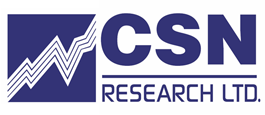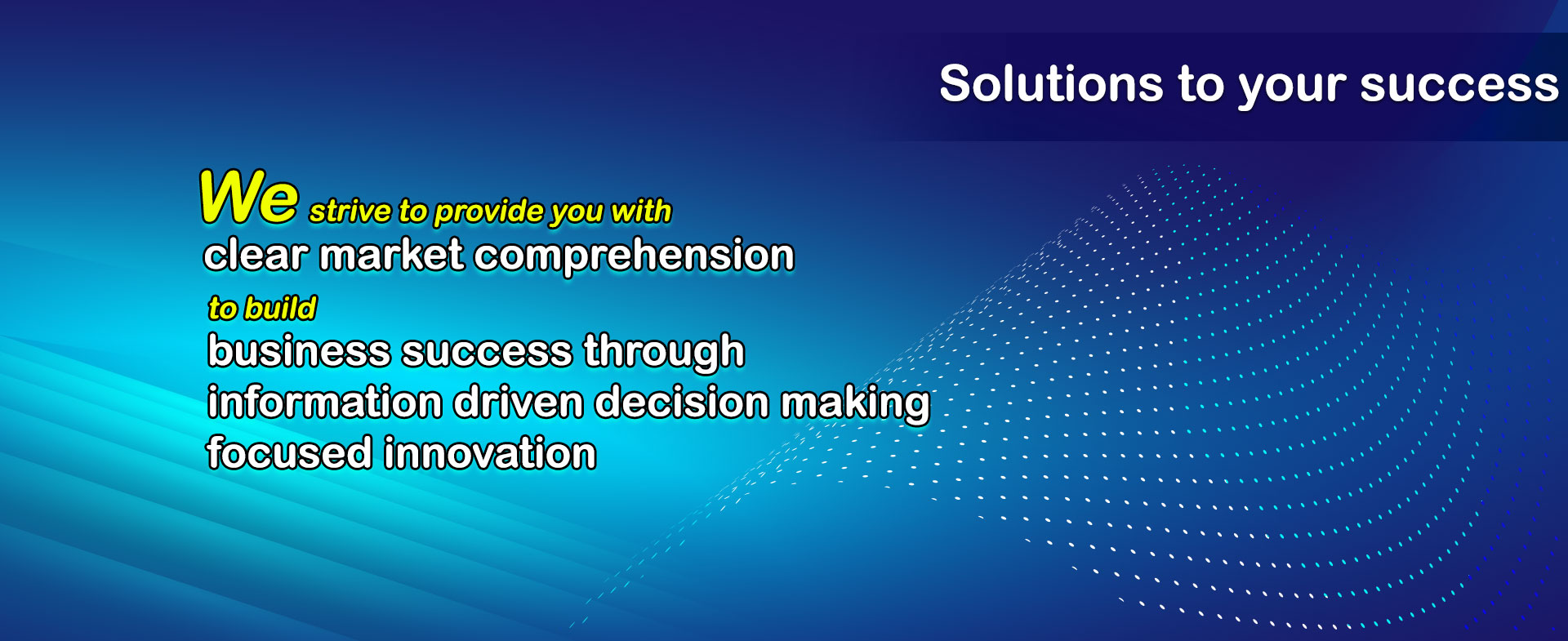Succession Planning
Succession Planning
The development of future leaders (Successor)
Author : Professor Nattapat Lopraditpong
Thailand Quality Award Criteria (TQA) discuss the roles and responsibilities of senior leaders (Senior Leader: SL) in several aspects, with one key focus being on creating an environment for success through "succession planning" and the development of future leaders within the organization, including "Career Development" for personnel and future leaders of the organization.
During a research study of a leading organization that had previously received the National Quality Award (TQA), the author asked the CEO about the most time-consuming aspects of their daily routine. The response included three main points:
- Diligently seeking future business opportunities that align with the TQA criteria, emphasizing the leader's role in setting directions for the future, strategic planning, identifying strategic opportunities, and leading innovation management systematically. This approach involves evaluating risks intelligently to bring about transformative changes within the organization, creating sustainability for the future.
- Strengthening the organizational culture by establishing shared core values that support the vision, mission, and communication of leaders to promote organizational culture. The leader's role includes developing policies, measures, and plans to drive collaboration with human resources, continuous assessment of behaviors aligned with values, and being a role model for senior leaders to encourage employees to behave according to the established values.
- Creating and preparing future leaders by planning for the succession of critical positions and systematically developing leaders in high-level positions or those critical to the organization's mission and strategy. This ensures that the organization does not face leadership gaps or inappropriate appointments, and strategies are set for preparing leaders through building, buying, or borrowing talent.
In summary, the leader's focus is on strategic planning for the future, fostering a strong organizational culture through shared values, and systematically developing and preparing future leaders to ensure the organization's sustained success.
Readers, imagine an organization that undergoes a leadership change every 4 years as part of its tenure cycle and lacks preparation for future leaders. Every 4 years, individuals find themselves speculating about the new leader, their direction, understanding of the organization, adherence to the vision, and the previously set strategy. Questions arise about whether the new leader will continue existing initiatives or introduce new ones, how they will adjust the organizational structure, and so on. This uncertainty often leads to a multitude of issues within the organization, including goal misalignment, inconsistent strategy implementation, and a lack of motivation among employees. It's akin to resetting or starting from scratch every 4 years, resulting in a discontinuous organizational experience.
When there is conflict or misalignment between old and new leaders, or when they operate on different wavelengths, it exacerbates organizational challenges. This negative impact is further intensified if the new management team has to address past problems rather than moving forward. In such cases, it's as if the organization is starting from a negative point, heavier than going back to square one.
To ensure that the majority of people in the organization understand the direction, drive the strategy effectively, and achieve goals, a significant amount of time is required. Therefore, a 4-year management cycle is remarkably short. The first year is often a learning period, especially for those who have not held high-level leadership roles before, involving training, development, and addressing issues inherited from the previous leadership team. In the second year, understanding of the job deepens, management systems are put in place, and strategic planning for the organization's future begins.
The third year is when the organization is fully armed, having learned and planned for the first two years. The machinery is running at full capacity. However, as the final year approaches, nearing the end of the tenure cycle, there may be signs of coasting. Some managers may think they've done enough and take a break, while others may hesitate to make decisions, waiting for the next management team to take charge. Therefore, in a 4-year management cycle, only about 2 years may be effectively dedicated to driving the strategy towards the lofty organizational goals, which is insufficient for significant achievements.
In conclusion, the typical 4-year management cycle might not provide enough time to successfully drive the strategy and accomplish ambitious organizational goals. It's essential to consider this timeframe carefully and recognize that effective strategy implementation and goal attainment may require more than the standard cycle duration.
Benefits of Succession Planning:
Succession planning is a crucial process in preparing the organization's talent pool to prevent workforce shortages in critical or key strategic positions in the future. The benefits of succession planning include:
- Improved Recruitment and Selection: Succession planning helps HR departments better plan for recruitment and selection of internal candidates. Continuous assessment of employee readiness and systematic data management enable organizations to understand the future workforce needs. This helps in identifying positions that may soon be vacant due to retirements or where finding qualified individuals may be challenging. Consequently, HR can proactively address these needs, ensuring a smooth transition.
- Motivational Tool: Succession planning serves as a motivational tool for employees. If organizations have policies that promote internal promotions more than hiring externally, it fosters a sense of encouragement among employees. This approach not only boosts morale but also contributes to a workforce that is consistently motivated and committed. Employees are likely to be more dedicated and engaged if they see growth opportunities within the organization.
The succession planning system allows organizations to assess potential risks accurately. By understanding the age and qualifications of employees in key positions, as well as identifying individuals with unique skills that are hard to come by, organizations can effectively manage potential risks. This enables timely training and development initiatives to prepare employees for succession, anticipating changes such as resignations, retirements, transfers, or unforeseen circumstances.
Preparedness and Flexibility: Succession planning enables organizations to proactively train and develop employees to be ready to step into critical roles when needed. It is advisable to identify and prepare 2-3 successors for each key position, allowing for flexibility and readiness to cope with various changes that may occur in the future, such as resignations, retirements, transfers, or unexpected events. This approach ensures the organization remains prepared and resilient.
In conclusion, succession planning is a strategic process that not only mitigates risks associated with workforce shortages but also fosters a motivated workforce and enhances organizational preparedness for the future. It is a tool for aligning organizational goals with individual growth, ultimately contributing to the overall success of the organization.
Succession Planning Process for Key Strategic Positions (KSP)
The author would like to present a framework for Succession Planning for Key Strategic Positions (KSP), consisting of 5 steps as illustrated in Figure 1:
Picture 1 KSP Management Process

1. Define Key Strategic Positions (KSP): Executives determine the criteria for identifying KSP positions. Criteria may include: 1) Positions crucial for driving the organizational strategy, 2) Positions vital for the continuity of business operations, the absence of which may disrupt the business, and 3) Positions with difficulty finding suitable replacements, requiring individuals with specific knowledge, skills, or expertise. A matrix may be created for prioritization and decision-making, as shown in Figure 2
Picture 2 Matrix: KSP position selection

2. Develop KSP's Profile or Success Profile: This includes Knowledge (What People KNOW), Experience (What People HAVE DONE), Personal Attributes (Who People ARE), and Competencies (What People CAN DO), abbreviated as K-E-PA-C, as shown in Figure 3.
Picture 3 Success Profile

The process of establishing a Success Profile involves several critical steps, as outlined in Picture 4:
- Review Roles and Responsibilities: Examine the job description and Key Success Profile (KSP) to identify expected work outcomes and crucial indicators for the position.
- Determine Necessary Knowledge: Assess the educational qualifications required for the role. Identify training needs to develop job-related knowledge, including understanding the organization.
- Evaluate Required Experience: Determine the relevant work experience, including the nature of past roles and the duration of experience. Consider previous positions held, involvement in committees, and other relevant experiences.
- Identify Personal Characteristics (Personal Attributes): Define the essential personal qualities the successor should possess. Highlight key attributes such as exceptional execution, persuasion, influencing skills, relationship-building abilities, and strategic thinking.
- Establish Expected Competency Levels: Set the expected competency levels for the position, encompassing Core Competency, Technical Competency, and Managerial Competency. Consider both current and future capabilities required for success in the role.
In summary, crafting a Success Profile involves a comprehensive analysis of roles, knowledge, experience, personal attributes, and competencies. This structured approach ensures a clear understanding of the qualifications and qualities needed for a successful successor in the designated position.
Picture 4 Success Profile Template

3. Select Potentials Matching the Success Profile: Using the K-E-PA-C criteria, tools are developed for assessing each aspect to aid in the selection process.
4. Create a Successor Development Plan (SDP): This involves setting goals or specifying target K-E-PA-C for development and determining learning activities such as on-the-job training, coaching, job rotation, interim assignments, task force participation, off-site training, self-learning, workplace education, and online learning. Timeframes are considered to align with the succession timeline.
5. Monitor, Evaluate, and Measure Successor Development: Utilize the same assessment tools as in Step 3 to track the progress and measure the effectiveness of the development efforts for Key Strategic Positions.
**************************************************************************************************************************************************************************************
การพัฒนาผู้นำในอนาคต (Successor)
เกณฑ์รางวัลคุณภาพแห่งชาติ (TQA) ได้กล่าวถึงบทบาทหน้าที่ของผู้นำระดับสูง (Senior Leader: SL) ในหมวดที่ 1 ไว้หลายประเด็น โดยหนี่งในเรื่องสำคัญคือ การสร้างสภาพแวดล้อมเพื่อความสำเร็จโดยการ “วางแผนเตรียมผู้รับหน้าที่ต่อเนื่องสำหรับผู้นำระดับสูง (succession planning) และการพัฒนาผู้นำในอนาคตขององค์กร รวมถึง “การพัฒนาอาชีพการงาน (Career Development) ของบุคลากรและผู้นำในอนาคตขององค์กร”
ครั้งหนึ่งที่ผู้เขียนมีโอกาสได้เข้าไปศึกษาวิจัยองค์กรชั้นนำที่เคยได้รับรางวัลคุณภาพแห่งชาติ (TQA) ในการสนทนากับผู้นำสูงสุดขององค์กรครั้งนั้น มีคำถามหนึ่งที่ผู้เขียนสอบถาม CEO ท่านนั้นว่า “ท่านใช้เวลาโดยส่วนใหญ่ไปกับเรื่องใดมากที่สุดในแต่ละวัน” คำตอบที่ได้ยินคือ หน้าที่ 3 ประการ
- เพียรมองหาธุรกิจในอนาคต สอดคล้องกับเกณฑ์ TQA ที่กล่าวถึงหน้าที่ของผู้นำในการกำหนดทิศทางเพื่ออนาคต วางแผนกลยุทธ์ ค้นหาโอกาสเชิงกลยุทธ์ (Strategic Opportunities) และนำไปสู่การจัดการนวัตกรรม (Innovation Management) อย่างเป็นระบบ เพื่อประเมินผลได้ผลเสียอย่างรอบด้าน (Intelligent Risk) ทำให้องค์กรเกิดการเปลี่ยนแปลงอย่างพลิกโฉม สร้างความยั่งยืนเพื่ออนาคต
- เสริมสร้างวัฒนธรรมองค์กรที่เข้มแข็ง ด้วยการกำหนดค่านิยมร่วม (Core Values) ที่สนับสนุนวิสัยทัศน์ พันธกิจ และผู้นำสื่อสารส่งเสริมให้เกิดการปฏิบัติจนกลายเป็นวัฒนธรรมองค์กร โดยบทบาทที่ผู้นำควรทำด้วยตนเองคือ การกำหนดนโยบาย/มาตรการ/แผน เพื่อขับเคลื่อนร่วมกับฝ่ายทรัพยากรบุคคล และมีการประเมินติดตามพฤติกรรมพึงประสงค์ตามค่านิยมและปรับปรุงต่อเนื่อง การเป็นแบบอย่างที่ดี (Role-Model Senior Leaders) ร่วมชื่นชมยินดีส่งเสริมให้บุคลากรประพฤติปฏิบัติตามค่านิยม เป็นต้น
- สร้าง/เตรียมผู้นำในอนาคต โดยกำหนดให้มีการวางแผนสืบทอดตำแหน่งที่สำคัญ และพัฒนาผู้นำในอนาคตอย่างเป็นระบบ ในตำแหน่งผู้นำระดับสูง หรือตำแหน่งที่สำคัญต่อพันธกิจและกลยุทธ์ขององค์กร ทำให้องค์กรไม่เกิดปัญหาการขาดช่วงของการนำ หรือได้ผู้ดำรงตำแหน่งที่ไม่เหมาะสม และกำหนดกลยุทธ์ในการเตรียมผู้นำ ไม่ว่าจะเป็น Build / Buy / Borrow
ท่านผู้อ่านลองคิดถึงองค์กรที่ต้องมีการเปลี่ยนแปลงผู้นำทุกๆ 4 ปี ตามวาระการดำรงตำแหน่ง และปราศจากการเตรียมความพร้อมผู้นำในอนาคต ทำให้ทุกๆ 4 ปี ต้องมานั่งลุ้นกันว่า ผู้นำคนใหม่จะเป็นใคร เขาจะมีทิศทางไปทางไหน จะเข้าใจองค์กรมากน้อยเพียงไร วิสัยทัศน์และแผนกลยุทธ์เดิมที่ผู้นำคนก่อนเคยกำหนดไว้จะดำเนินไปอย่างไรต่อ ผู้นำคนใหม่ที่เข้ามาจะทำเรื่องเดิมไหม และจะมีเรื่องอะไรมาใหม่อีก จะมีการปรับโครงสร้างองค์กรไปอย่างไร ฯลฯ คำถามมากมายมักเกิดขึ้นกับผู้คนในองค์กร จนนำไปสู่ปัญหาการมีเป้าหมายมากมาย ทำๆ เลิกๆ ไม่จริงจัง เปลี่ยนไปตามคนสั่ง คนทำงานขาดขวัญกำลังใจ สิ้นเปลืองทรัพยากรโดยเปล่าประโยชน์ เหมือนองค์กรต้องเริ่มต้นใหม่ (Set Zero) หรือนับหนึ่งใหม่ทุกๆ 4 ปี องค์กรขาดความต่อเนื่อง ยิ่งถ้าผู้นำรุ่นเก่าและรุ่นใหม่มีปัญหาขัดแย้งกัน หรืออยู่คนละขั้ว เหมือนองค์กรติดลบ (หนักกว่ากลับไปเริ่มจาก 0) เพราะทีมบริหารชุดใหม่ต้องมาคอยแก้ไขปัญหาในอดีต แทนที่จะได้เดินหน้าต่อ ยิ่งทำให้องค์กรเสียรังวัด
การจะทำให้คนส่วนใหญ่ในองค์กรเข้าใจทิศทางได้อย่างสอดคล้อง ขับเคลื่อนกลยุทธ์ได้อย่างมีประสิทธิผล ต้องใช้เวลาไม่น้อย ดังนั้นเวลาเพียง 4 ปีในการบริหารตามวาระจึงสั้นมาก เพราะปีที่ 1 เหมือนเป็นปีแห่งการเรียนรู้งาน ยิ่งถ้าไม่เคยเป็นผู้นำระดับสูงหรือมีประสบการณ์ในการบริหารองค์กรมาก่อนยิ่งมีข้อจำกัดมาก และมักเป็นปีแห่งการเรียนรู้ ฝึกอบรม พัฒนา ประชุมสัมมนาของผู้นำมือใหม่ รวมถึงเป็นปีแห่งการสะสางปัญหาเดิมที่เกิดจากทีมบริหารชุดก่อนหน้า พอเข้าปีที่ 2 จึงเริ่มเข้าใจในงาน เริ่มเข้าใจในวิธีขับเคลื่อน เริ่มลงมือวางระบบบริหารจัดการ และเริ่มคิดไปข้างหน้าและแผนวางกลยุทธ์องค์กร เข้าปีที่ 3 จึงเป็นปีที่ออกอาวุธได้เต็มเม็ดเต็มหน่วย จากที่ได้เรียนรู้และวางแผนมาใน 2 ปีแรก เดินเครื่องได้เต็มกำลัง แต่พอเข้าปีสุดท้าย ซึ่งเป็นปีที่ใกล้หมดวาระ ก็อาจมีอาการเกียร์ว่างกันบ้าง ผู้บริหารบางคนอาจคิดว่าทำมาเยอะแล้ว ปีสุดท้ายขอพักผ่อน หรือผู้บริหารบางคนอาจไม่ตัดสินใจเพราะเกรงจะเสียมารยาท รอให้ทีมผู้บริหารชุดถัดไปมาตัดสินใจ ดังนั้นหากพิจารณาดีๆ ในวาระ 4 ปีของการบริหาร อาจมีเวลาขับเคลื่อนกลยุทธ์ให้สำเร็จตามเป้าหมายวิสัยทัศน์เพียงแค่ 2 ปีเท่านั้นเอง ซึ่งไม่เพียงพอในการขับเคลื่อนสู่การบรรลุเป้าหมายที่ยิ่งใหญ่
ประโยชน์ของการวางแผนสืบทอดตำแหน่ง (Succession Planning)
แผนการสืบทอดตำแหน่ง ถือเป็นกระบวนการที่สำคัญในการเตรียมความพร้อมของบุคลากรเชิงรุกเพื่อป้องกันปัญหาด้านการขาดแคลนบุคลากรในตำแหน่งงานหลัก (Critical Jobs) หรือตำแหน่งงานเป้าหมาย (Key Strategic Positions) ที่สำคัญขององค์กรในอนาคต ช่วยป้องกันปัญหาการขาดแคลนบุคลากรในตำแหน่งงานที่สำคัญขององค์กรในอนาคต กระบวนการ Succession Planning มีประโยชน์ดังนี้ 1) ช่วยให้หน่วยงานที่รับผิดชอบด้านบริหารทรัพยากรบุคคลสามารถวางแผนสรรหาและคัดเลือกบุคลากรเชิงรุกได้ดียิ่งขึ้น เพราะเมื่อองค์กรมีการประเมินความพร้อมของบุคลากรอยู่ตลอดเวลา รวมทั้งมีการจัดทำข้อมูลด้านบุคลากรอย่างเป็นระบบก็จะทำให้ทราบถึงจำนวนคนที่ต้องการในอนาคต เพื่อให้รู้ว่าบุคลากรในตำแหน่งใดกำลังเกษียณอายุและบุคลากรในตำแหน่งใดมีคุณสมบัติหายากและเป็นที่ต้องการขององค์กร ดังนั้น หน่วยงานที่รับผิดชอบด้านบริหารทรัพยากรบุคคลจะได้ประเมินสถานการณ์ความเสี่ยงทั้งหลายได้ถูกต้อง ทั้งนี้ จะได้วางแผนการฝึกอบรมและพัฒนาบุคลากรที่จะมาสืบทอดตำแหน่งได้ล่วงหน้าแต่เนิ่นๆ ซึ่งทางที่ดีแล้วควรพยายามสร้างผู้สืบทอดตำแหน่งที่คาดว่าจะว่างลงไว้ 2-3 คน เพื่อเป็นการเตรียมความพร้อมและรองรับการเปลี่ยนแปลงต่างๆ ที่อาจจะเกิดขึ้นในอนาคตได้ เช่น การลาออก เกษียณ การโอน ย้าย หรือการเสียชีวิต เป็นต้น 2) ระบบ Succession Planning สามารถใช้เป็นเครื่องมือจูงใจบุคลากรได้เป็นอย่างดี ทั้งนี้ ถ้าองค์กรมีนโยบายส่งเสริมการเลื่อนขั้นบุคลากรภายในมากกว่าสรรหาคนนอกมาดำรงตำแหน่งแทนแล้ว นโยบายนี้จะทำให้บุคลากรมีขวัญกำลังใจดีขึ้น อีกทั้งยังมีผลทางอ้อมทำให้บุคลากรทุกคนมุ่งมั่นและพัฒนาตนเองอย่างสม่ำเสมอและตลอดเวลา ในทางตรงข้าม หากบุคลากรมองไม่เห็นโอกาสเติบโตก้าวหน้า พอตำแหน่งว่างก็ไปเอาคนนอกมารับตำแหน่งตลอดเวลา ข้ามหัวตนไปตลอด ก็จะบั่นทอนความผูกพัน ไม่มุ่งมั่นทุ่มเท
ความหมายของการวางแผนการสืบทอดตำแหน่ง (Succession Planning)
การวางแผนการสืบทอดตำแหน่ง หมายถึง การเฟ้นหาบุคคลภายในองค์กรที่เป็น “ดาวเด่น” (Talent) ที่สามารถสร้างผลงานที่ดีเลิศตามที่องค์กรคาดหวัง เพื่อให้ดำรงตำแหน่งหนึ่งๆ ทันทีที่ตำแหน่งนั้นๆ ว่างลง โดยทั่วไปองค์กรจะเตรียม “ดาวเด่น” จำนวนไม่น้อยกว่า 2-3 คนไว้สำหรับรองรับหนึ่งตำแหน่ง โดย “ดาวเด่น” ดังกล่าวมีความเหมาะสมทั้งในด้านวัยวุฒิและคุณวุฒิ รวมทั้งมีความพร้อมที่จะดำรงตำแหน่งหนึ่งๆ ที่ว่างลงในทันทีตามที่องค์กรกำหนด อย่างไรก็ตาม ในที่สุดองค์กรจะคัดเลือกผู้สืบทอดตำแหน่ง (Successor) ให้เหลือเพียง 1 คน ด้วยเกณฑ์การ “คัดเลือก” ขององค์กร เพื่อให้ผู้ที่ “พร้อมและเหมาะสมมากที่สุด” เป็นผู้สืบทอดตำแหน่ง (Successor) ซึ่งถือเป็นการมอบหมายงานที่สำคัญขององค์กรให้แก่ผู้ที่เหมาะสมในเวลาอันควร (Put the right person on the right job at the right time) เพื่อให้งานในความรับผิดชอบของตำแหน่งดังกล่าวมีความต่อเนื่อง โดยไม่เกิดการสะดุดไม่ว่ากรณีใดๆ
กระบวนการวางแผนสืบทอดตำแหน่งของตำแหน่งที่สำคัญเชิงกลยุทธ์
ผู้เขียนขอนำเสนอกรอบแนวทางการวางแผนสืบทอดตำแหน่ง (Succession Planning) สำหรับตำแหน่งที่สำคัญ (Key Strategic Position: KSP) ประกอบด้วย 5 ขั้นตอนตามภาพที่ 1
ภาพที่ 1 KSP Management Process

- กำหนดตำแหน่งเชิงกลยุทธ์ที่สำคัญ (KSP) โดยผู้บริหารกำหนดเกณฑ์เพื่อใช้ในการพิจารณาคัดเลือกตำแหน่ง KSP เช่น 1) เป็นตำแหน่งสำคัญต่อการขับเคลื่อนยุทธศาสตร์ 2) มีความสำคัญต่อความต่อเนื่องในการดำเนินธุรกิจ หากไม่มีผู้ดำรงตำแหน่งนี้อาจทำให้ธุรกิจหยุดชะงัก 3) เป็นตำแหน่งสำคัญที่หาผู้ดำรงตำแหน่งได้ยาก มีข้อจำกัดในการหาผู้ทดแทน หรือต้องการผู้ดำรงตำแหน่งที่มีความรู้ ทักษะ ประสบการณ์เฉพาะทางหรือมีความเชี่ยวชาญพิเศษ หรืออาจกำหนดเกณฑ์การพิจารณาแล้วจัดทำ Matrix เพื่อการลำดับความสำคัญและการตัดสินใจเลือกตำแหน่ง KSP ตามภาพที่ 2
ภาพที่ 2 Matrix การคัดเลือกตำแหน่ง KSP 
- พัฒนา KSP’s Profile หรือ Success Profile ซึ่งประกอบด้วย Knowledge (What People KNOW), Experience (What People HAVE DONE), Personal Attributes (Who People ARE), Competencies (What People CAN DO) หรือเรียกย่อๆ ว่า K-E-PA-C ตามภาพที่ 3
ภาพที่ 3 Success Profile

โดยขั้นตอนในการกำหนด Success Profile มีขั้นตอนที่สำคัญ (ตามภาพที่ 4) ดังนี้ 1) ทบทวนบทบาทหน้าที่ ลักษณะงานของตำแหน่ง KSP ว่ามีผลลัพธ์ที่คาดหวังของงานและตัวชี้วัดที่สำคัญอะไรบ้าง 2) กำหนดองค์ความรู้ที่จำเป็นของตำแหน่ง ทั้งวุฒิการศึกษา การฝึกอบรมพัฒนา ความรู้ในงาน รวมถึงความรู้ในองค์กร 3) กำหนดประสบการณ์ที่จำเป็นว่าผ่านงานอะไรมา ระยะเวลานานเท่าไร ควรผ่านการดำรงตำแหน่งใดมาก่อน รวมถึงการเป็นคณะกรรมการ เป็นต้น 4) กำหนดคุณลักษณะส่วนบุคคล (Personal Attribute) ว่าผู้ที่จะเป็น Successor ควรมีคุณสมบัติหลักอะไรบ้าง เช่น โดดเด่นด้านการปฏิบัติการ (Executing), การโน้มน้าว (Influencing), การสร้างสัมพันธ์ (Relationship Building), การคิดเชิงกลยุทธ์ (Strategic Thinking) 5) กำหนดระดับสมรรถนะที่คาดหวังของตำแหน่ง ทั้ง Core Competency, Technical Competency และ Managerial Competency ทั้งในปัจจุบันและอนาคต (Current and future capabilities)
ภาพที่ 4 Success Profile Template

- คัดเลือกผู้มีศักยภาพตาม Success Profile โดยนำ Knowledge, Experience, Personal Attributes, Competencies หรือ K-E-PA-C ที่กำหนดไปพัฒนาเครื่องมือเพื่อใช้ในการประเมินตามองค์ประกอบแต่ละด้าน
- จัดทำแผนพัฒนา Successor Development Plan (SDP) โดยเริ่มต้นที่ 1) การกำหนด Goal หรือระบุ K-E-PA-C เป้าหมายที่ต้องเร่งพัฒนา 2) กำหนด Learning activities หรือแนวทางการเรียนรู้และพัฒนา เช่น การฝึกอบรมควบคู่กับการปฏิบัติงาน (On the job training), การสอนงาน (Coaching), การหมุนเวียนงาน (Job Rotation), การมอบหมายงานเร่งด่วนหรืองานพิเศษ (Interim and Emergency Assignment), การมอบหมายงาน (Task Force Assignment), การฝึกอบรมนอกสถานที่ (Off – site training), การเรียนรู้ด้วยตนเอง (Self - learning), การให้การศึกษาในสถานที่ทำงาน การฝึกอบรมภายนอก หรือการเรียนรู้ผ่านระบบออนไลน์ (Online learning) เป็นต้น โดยคำนึงถึงระยะเวลาในการทดแทนตำแหน่งเพื่อกำหนดกรอบเวลาในการพัฒนาให้สอดคล้อง
- ติดตาม ประเมิน วัดผลการพัฒนา Key Strategic Position โดยสามารถใช้เครื่องมือในการประเมินเช่นเดียวกันกับในขั้นตอนที่ 3 ได้
04 July 2024
Viewed 564 time

 EN
EN  TH
TH

